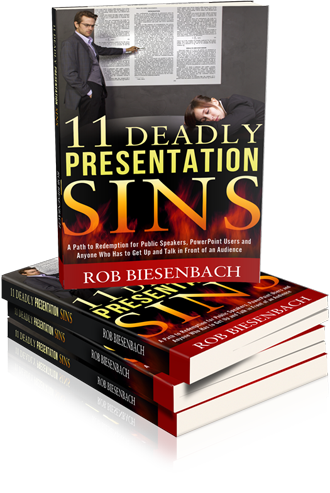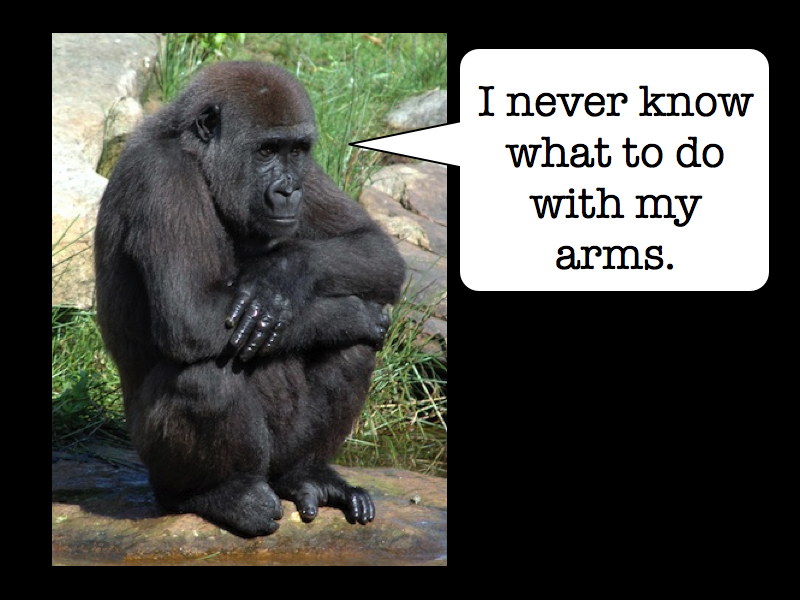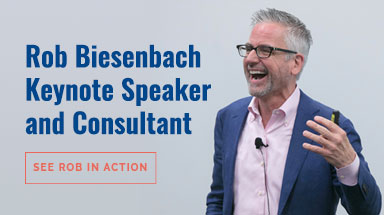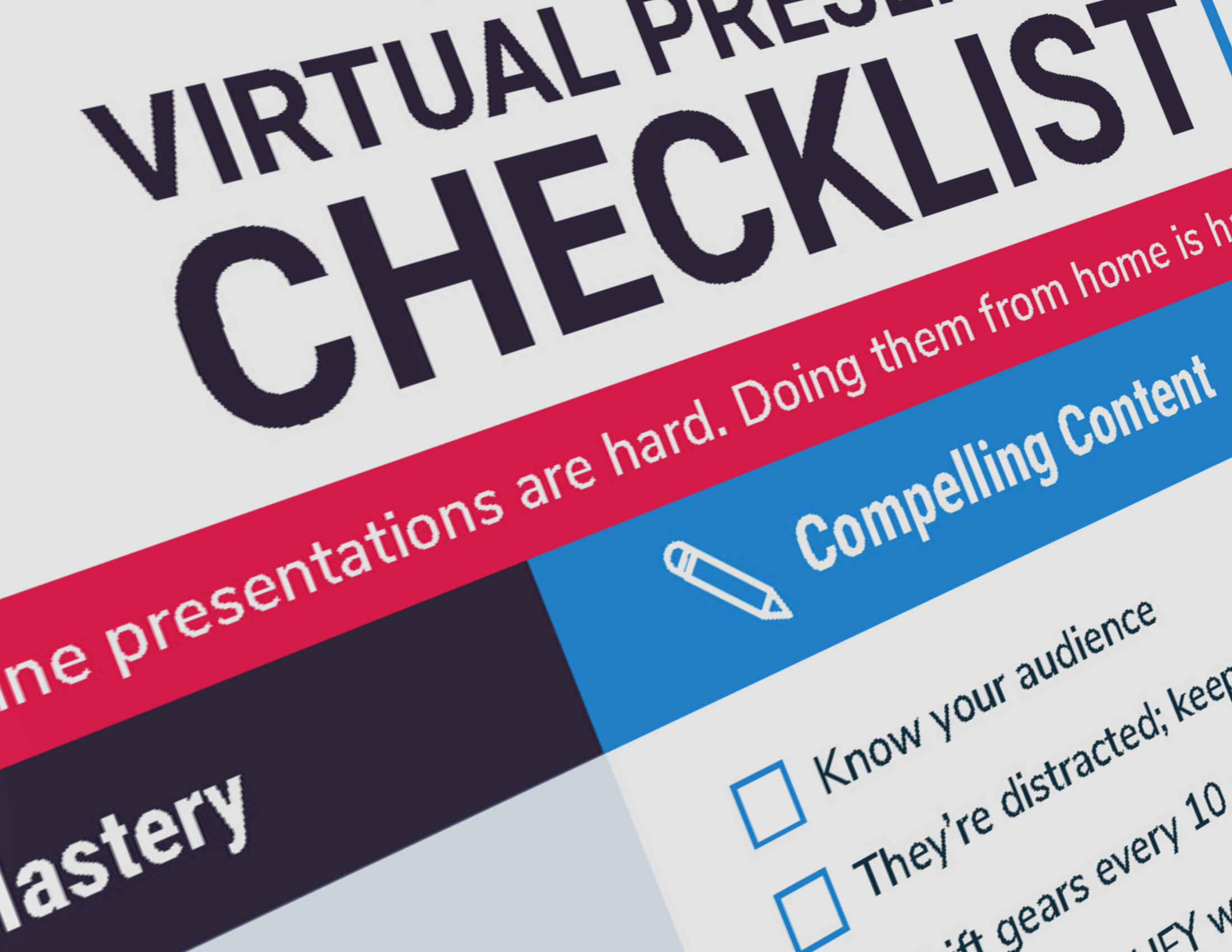
Poor speaking skills can be a career killer, making it harder to get your ideas and programs approved, more difficult to close a sale, and unlikely you’ll be invited to address important gatherings of your peers.
The good news is, since most people are so mediocre at it, you have the opportunity to stand out from the crowd by making a few simple adjustments to your content and delivery.
So today I offer the second half of my list of the 11 deadly sins that speakers and presenters commonly commit.
Sins 1 Through 6
To recap, here are the first six from last week:
- Ignoring Your Audience’s Interests and Needs
- A Flat Opening
- Lack of Focus
- Bad (Or No) Storytelling
- No Emotional Pull
- Dull, Ugly Visuals
Read on for the rest.
7. Low-Energy Delivery
There’s nothing more uninspiring than a dull, listless performance from a speaker. I mean, if you’re not excited about the subject matter, how do you expect me to get excited? Energy is a subtle thing. It can be as simple as speaking up and standing straight. But it goes deeper than that.
It’s also about focus, intention and putting your senses on heightened alert so you can perceive your audience’s thoughts and feelings and react to them. You don’t have to stalk the stage like an old-time televangelist or late-night infomercial pitchman, but you do have to put passion and conviction behind your words. And you have to stop yourself from mentally and emotionally checking out.
Here are my 7 tips for bringing the energy and some advice for staying in the moment.
8. No Interaction
One of the things you can do in a presentation that you just can’t do as well through other forms of communication is interact with the audience. Sure, there’s Skype and Google hangouts and webinars, but none of those can quite match the face-t0-face real-time human interaction of an in-person event. So get your audience involved.
That means more than allowing times for Q&A (which you should definitely do, if practical). It also means asking them questions along the way — letting them fill in the blanks. For example:
- “Words are just one way to get our point across. What are some others?”
- “Studies show that images are six times more memorable than words. Does that surprise anyone? Why or why not?”
Note that these are very specific questions. I have had spectacularly bad luck asking generic, open-ended questions like, “So … any questions????” You need to lead the conversation. You can’t always count on a few extroverts in the audience to pipe up.
The point is to make your audience a partner in telling your story. Here’s some quick advice on how to get the conversation going.
9. Slavish Devotion to Body Language Myths
Stop paying attention to body language myths. Like the one that says 92% of all communication is nonverbal. That common piece of conventional wisdom is total BS. (And it’s dangerous, leading people to conclude that their content barely matters as long as they give it the ol’ razzle-dazzle.)
Yet for years it’s had people up in arms about, well, what to do with their arms. “It’s wrong to cross them, right? And I can’t put my hands in my pockets. What do I do with them???”
Relax. Concern yourself instead with intention. Be positive, enthusiastic and energetic and “your gestures will take care of themselves.” Here’s a quick primer with links to other helpful information.
10. Failure to Adjust
The main body language signals you should be attuned to are those coming from your audience. Are they bored, restless, buried in their blackberries? If you’re tuned in, you should be able to tell when they tune out. And you should be prepared to shake things up.
Did you know that Martin Luther King Jr came up with much of his “I Have a Dream Speech” on the fly? It’s true. Mahalia Jackson was there that day and didn’t like where his speech was going. She piped up — “Tell ’em about the dream, Martin!” — and he switched it up.
As described by the guy who wrote the original draft Dr. King discarded, it went like this:
“Martin clutched the speaker’s lectern and seemed to reset. I watched him push the text of his prepared remarks to one side. I knew this performance had just been given over to the spirit of the moment. I leaned over and said to the person next to me, ‘These people out there today don’t know it yet, but they’re about ready to go to church.’”
Okay, few of us are orators of Dr. King’s caliber, but there are some important lessons here for everyday speakers. Cut your material, amp up the energy, quicken the pace, start some interaction — anything but persisting with what’s clearly not working.
11. Inadequate Rehearsal
Too many people get the idea that they can just “wing it” up there, letting their own natural instincts and command of the subject matter guide them. That may work for some, but the vast majority of us need to prepare. Otherwise we meander, get lost, fail to land messages just right and go over our allotted time.
To say nothing of all the technical elements that can go wrong. Just ask Bret Michaels. The bottom line: everybody needs to rehearse. Here are my 6 tips for making the most of rehearsal time so you’re not caught flat-footed at showtime.
Go Forth, And Sin No More
I guarantee if you adopt these tips you will stand head and shoulders above the crowd. Your ideas, your programs, your sales pitches, will suddenly gain more traction.
And eventually your colleagues will run, not walk, to Conference Room B, just for the opportunity to see you perform.
More to come on this subject, by the way. I’m putting it together in a new presentation, and am contemplating a short ebook, too. Stay tuned.









